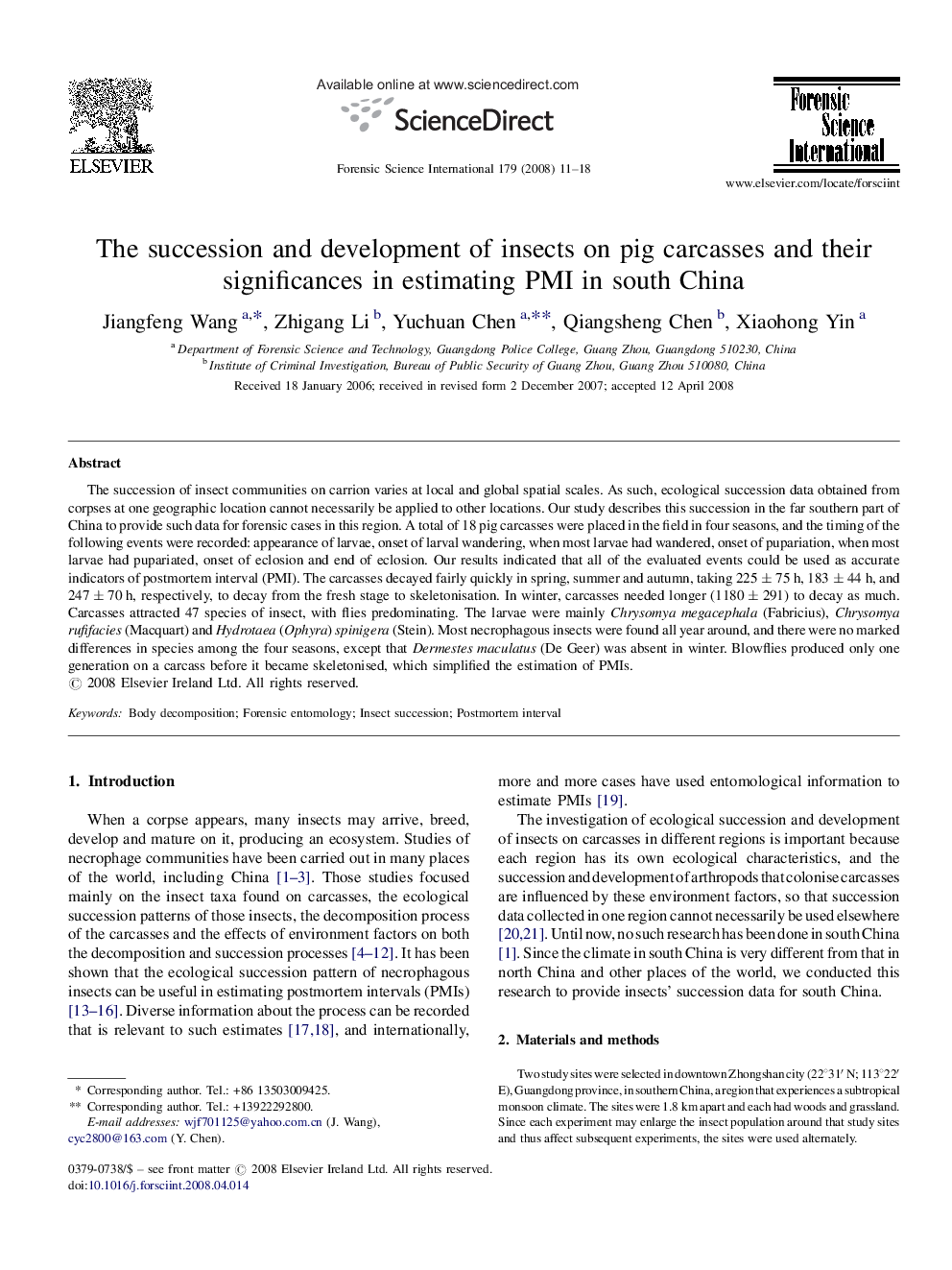| کد مقاله | کد نشریه | سال انتشار | مقاله انگلیسی | نسخه تمام متن |
|---|---|---|---|---|
| 97816 | 160510 | 2008 | 8 صفحه PDF | دانلود رایگان |

The succession of insect communities on carrion varies at local and global spatial scales. As such, ecological succession data obtained from corpses at one geographic location cannot necessarily be applied to other locations. Our study describes this succession in the far southern part of China to provide such data for forensic cases in this region. A total of 18 pig carcasses were placed in the field in four seasons, and the timing of the following events were recorded: appearance of larvae, onset of larval wandering, when most larvae had wandered, onset of pupariation, when most larvae had pupariated, onset of eclosion and end of eclosion. Our results indicated that all of the evaluated events could be used as accurate indicators of postmortem interval (PMI). The carcasses decayed fairly quickly in spring, summer and autumn, taking 225 ± 75 h, 183 ± 44 h, and 247 ± 70 h, respectively, to decay from the fresh stage to skeletonisation. In winter, carcasses needed longer (1180 ± 291) to decay as much. Carcasses attracted 47 species of insect, with flies predominating. The larvae were mainly Chrysomya megacephala (Fabricius), Chrysomya rufifacies (Macquart) and Hydrotaea (Ophyra) spinigera (Stein). Most necrophagous insects were found all year around, and there were no marked differences in species among the four seasons, except that Dermestes maculatus (De Geer) was absent in winter. Blowflies produced only one generation on a carcass before it became skeletonised, which simplified the estimation of PMIs.
Journal: Forensic Science International - Volume 179, Issue 1, 18 July 2008, Pages 11–18